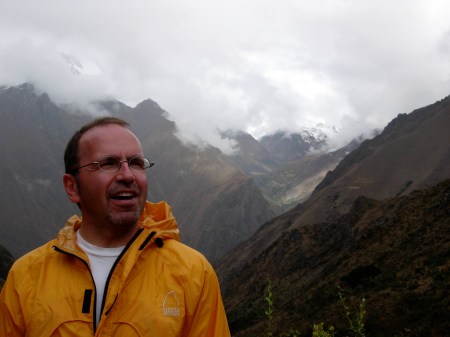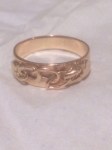When I was younger, I had a small watch collection. It included one that I bought in Italy along with my father’s favorite that I began wearing when he died, and several ridiculously colorful watches from the Swatch years. It was a bold variety but ultimately they all did the same thing, ticking away the seconds, minutes, hours and days.

As a kid, I struggled with anxiety and remember watching the clock closely in school. The minutes dragged by, especially in gym class where I waited to be picked last. “Ok Ok, I’ll take Gatto,” was begrudgingly muttered by team captains. In their defense, if you were looking to build a winning football team, I definitely wasn’t your guy. It’s funny to look back on today. I’m not proud to admit it, but It brings me great pleasure when I see pictures of those same captains today on Facebook, certain that my blood pressure and waist line are lower than theirs. As a kid, though, I’d tell myself that all of this was just the seconds ticking by. I tried to calm myself, knowing that the clock’s hands would eventually make the bell magically ring, releasing me from the angst I created.
I hadn’t worn a watch in many years, until I received one from my boyfriend Jay on Christmas. The watch, along with turning 60, has raised my awareness of the passing of time. In understandable and predictable ways, the passing of time has again shifted its meaning. I approach it with some trepidation. My father was diagnosed with cancer at age 60 and died at 62, shortly after his retirement. My husband died at 57, never even reaching 60. I find myself paying more attention to articles about the future of social security. I check the status of my pension regularly and notice the height on my license is no longer true. It wasn’t much to start with, and I’m clearly on the other side of the curve. Despite these things, I am also filled with gratitude and anticipation.
Many of us grow up with certain impressions of what each decade of our life is going to be about. In retrospect, they mostly went as expected. The 20’s brought the shift into adulthood and the launch of a career. The 30’s brought a clearer sense of identity and competence, both personally and professionally while still hanging onto some of the energy and optimism of younger years. In the 40’s, you earn the credibility of being a legitimate adult. I married, bought a house and felt like I had arrived. It felt like this was the time I had been waiting for.
Then 50 came. I didn’t have a vision for it. What’s supposed to happen in these years on the cusp of my AARP membership? I accompanied my mother and husband to their deaths. At the same time, it was the peak of professional responsibility and achievement. I battled countless bureaucracies after Art and my mother’s deaths. I sold homes, bought new ones, then did it all again when it didn’t feel right. I struggled to figure out what it meant to be a widower. It felt like being an awkward adolescent, trapped in a body that you didn’t know how to claim at a time that felt neither here nor there.
The grief of my 50’s was sometimes crushing. Though I haven’t often admitted this, for at least two years I experienced spontaneous episodes of heaving, breathless sobs in which I truly wondered if I would be able to recover from the sheer panic. The point, though, isn’t so much about the grief, but about the recovery. Life drew me back in, the proverbial spring after a long, cold winter. The work that has to get done, the lawn that has to get mowed, the dishes that have to get washed and the dog that has to get walked all beckoned. More than anything, the love of family and friends, the yearning for more, the simple yet profound beauty of it all came into view and settled back into my bones. And then came the joy and comfort of new love, the power of connection and belonging.
I’ve been thinking a lot about how we integrate all these different stages and events of our life — the tragic, the joyful, the expected, the shocking — how they all shape us and somehow weave together in a way that almost makes sense when you look back. In an odd way, I’ve become proud of my identity as a widower. Don’t get me wrong – I’d trade it in in a heartbeat and wish it on no one. And yet it feels rather heroic. People want to believe you are ok and mostly I am. I carry my grief with me everywhere and it is another lense through which I see the world. Even today, I wonder what Art would have planned to celebrate my 60th. I see the birth of great nieces and nephews, the graduation of young people he loved and I feel his absence. I don’t say it. I feel the joy of these occasions fully, and at the same time I feel grief. It isn’t an albatross around my neck. It is a part of me that I now fully embrace. It’s like looking at a diptych – one of those pictures that’s made up of two separate images. If you look at it one way, you see an old lady but then you look again, and it’s a young person. Every experience now has joy and grief. They coexist peacefully but equally present. Some days I am even grateful for grief. As it is prone to do, it opens my eyes to the silliness of our sense of invincibility, self-importance and worry. It anchors me in the moment and gives me pause. It reminds me to keep making room for what is next and it has taught me that we can hold these opposing perspectives and feelings at the same time.
Last night, in what was a brief, fleeting image in a dream, I got a glimpse of something that seemed to pull the 50’s together and point to the emerging shift of my 60’s. It brought together all these pieces of my life. In my dream, I was wearing the watch that Jay gave me. Unexpectedly, Art appeared and began asking me about the watch and Jay. The conversation was pleasant and brief. There was no awkwardness to it. We understood. When I woke up, for a few seconds I thought I was in bed in our old home with Art lying next to me. I felt him there in the exact same way I did for many years. I had no conscious thought about it, it was simply my reality at the moment. I rolled over and opened my eyes to see Jay sleeping beside me. It took a second to catch my breath and orient myself, but it brought a sense of ease. In that moment everything was there in my dream and waking. A watch. The passing of time. The watch and the passing of time connected me both back to Art and to Jay with ease and comfort. It’s just the ticking away of the seconds, hours, and days. It all blends together and culminates in this moment. Then the next and the one after that.
I have some beliefs about what the 60’s are supposed to be about. I’m ditching them. Regardless of what they’re supposed to be about, I’m creating them for myself. I want to create a transition into a stage of life that honors what I’ve accomplished professionally and personally, but frees up more of my energy. I want to shift my attention away from doing, and put it more on being. I want to build new connections and deepen current ones. I’ve taken on a quest: freedom through ease. I’m not looking for things to be easy, but to do even the hard things with more ease…to let go of pushing and struggling…to find the natural rhythm of 60 and beyond that is right for me. Some of what I want is the same as what many people want – more time with the people you love, time to travel – but it’s the conscious choosing of it that makes it mine. If I’m lucky enough to reach 70, I’ll look back on the mystery of the 60’s and see that it all made sense too.







 Subscribe via RSS.
Subscribe via RSS.
Recent Comments